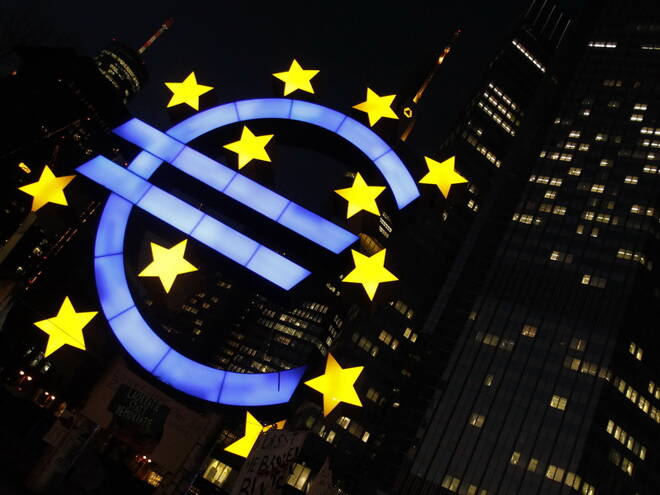Advertisement
Advertisement
China GDP, ECB Decision Could Rock the Markets
By:
We heard a lot from the Bank of Japan in late September. The Fed was also busy in late September according to the minutes of its meeting released last
We heard a lot from the Bank of Japan in late September. The Fed was also busy in late September according to the minutes of its meeting released last week. The U.K. has been in the news because of the announced plan to file Article 50 in late March and the British Pounds’ sell-off into price levels not seen since 1985. China even reminded us last week that it is still relevant with the release of a surprisingly disappointing trade balance report that shook up the markets enough to drive stocks lower, U.S. Treasury yields higher and to derail the U.S. Dollar’s steady rally, at least temporarily.
Noticeably absent from the list is the European Central Bank, but this will change on Thursday, October 20 when the ECB meets to decide monetary policy. ECB President Mario Draghi is also scheduled to hold a press conference that traders usually count on for added volatility. China will also return to the limelight with the release of its third quarter GDP results on Wednesday, October 19.
China
After the People’s Bank of China pumped billions of dollars into its economy and traders waited patiently to allow this stimulus to trickle through the economy, it actually started to produce data that suggested the economy was strengthening.
After reaching a low at 195B in April, China’s trade balance gradually climbed each month until it reached a high at 346B in September. Last week, however, the latest read came in at 278B, far below expectations of 365B.
The USD-Denominated Trade Balance reached a low for the year in April at 29.9B, but it managed to claw back to 52.3B in August. Last week, investors were looking for a read of 53.1, but out came a disappointing 42.0B figure.
This week’s news suggested that the economy may be settling rather than expanding. This also caused concerns in the markets, sending global equity markets tumbling, Treasury yields higher and a general risk off scenario that drove investors into the safety of the Japanese Yen.
Next week, China will release its latest quarterly GDP figures and given the reaction to the trade balance report, this report should be watched closely because it is likely to trigger a volatile response in either direction if it misses big on either side of the 6.7% estimate. In order for this report to hit its forecast, increased budget spending and the current property boom must come in strong enough to offset the weak export situation.
European Central Bank
We haven’t heard much from the ECB lately, but this is about to change next week when the central bank meets and President Mario Draghi steps up to the podium. His major task will be to offer hints about the central bank’s next move without shaking up the relatively calm Euro market that has remained range bound since the Brexit vote was announced in late June.
Draghi has the tough task of acknowledging weak growth and extremely low inflation while at the same time convincing traders that the ECB still has stimulus measures available in its bag of tricks. If he does pull the trigger on more stimulus then he’s going to have to explain that there is an exit strategy to all this stimulus madness since the bank has already eased substantially and it may be getting close to a point where it loses its flexibility while running out of stimulus ideas.
Based on the recent rumors that have been swirling around the markets lately, Draghi and his central bankers are going to have to decide whether to extend the 80-billion Euro per month asset purchase program, due to run out in March 2017, or start tapering the massive amount of stimulus.
He’ll be facing opposition from Germany which opposes the idea of more stimulus. And he doesn’t want to start tapering too soon or he may derail a fragile economy that is starting to recover. This doesn’t leave him too much wiggle room.
Economists are saying that the ECB is not likely to make any changes in policy, but they do expect a tweak in December. This will give the central bank more time to study the economic data and avoid shaking up the markets ahead of the U.S. presidential election. Additionally, if Draghi waits until December, he’ll be able to make his decision with a strong inclination as to what the Fed will do about interest rates. In December, the ECB meets on December 8 and the Fed makes its interest rate decision on December 14.
Next week there is a strong possibility for volatility in all the major markets with the release of China’s latest GDP figures and the ECB’s monetary policy decision. The markets could turn bearish if China misses to the downside and bullish if GDP comes in above expectations.
If Draghi decides to tweak with more stimulus then look for the EUR/USD to weaken. If he announces a tapering program then the Euro may strengthen.
About the Author
James Hyerczykauthor
James is a Florida-based technical analyst, market researcher, educator and trader with 35+ years of experience. He is an expert in the area of patterns, price and time analysis as it applies to futures, Forex, and stocks.
Latest news and analysis
Advertisement
